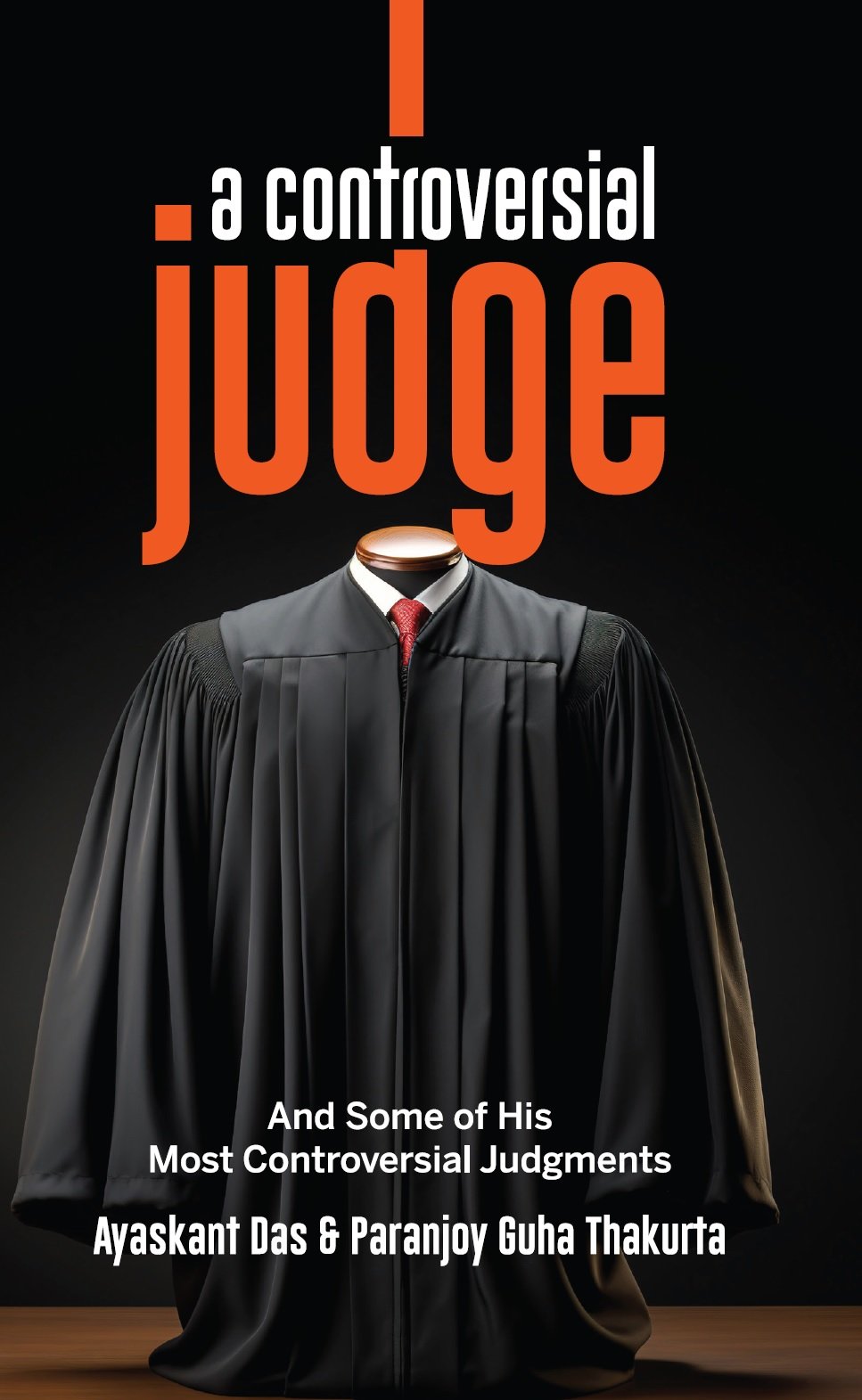Is there a connection between the impending formation of the country’s biggest telecommunications conglomerate and the sudden transfer of a top government official who was heading the Department of Telecommunications (DoT) in the Ministry of Communications and Information Technology? The link between the two developments may not seem obvious. They are, however, closely connected and have much to do with the consolidation that is taking place in the world’s second-largest market for mobile communication services. What used to be an intensely competitive market in India, with over half a dozen players vying with one another, is soon going to be dominated by three powerful business groups. Two of these, the Bharti Airtel Group (which may lose its position as market leader) and the Idea–Vodafone combine have predictably been unhappy about how the “free” services offered by their rival, Reliance Jio (RJio)—which is part of the Reliance Industries Group headed by India’s richest man Mukesh Ambani—have badly dented their bottom lines. But that is not all. The incumbent companies are wary of the clout that continues to be wielded by the Reliance Group in the corridors of power in influencing polices and appointments.
On 20 March 2017, it was announced that Idea Cellular, a part of the Aditya Birla Group, and Vodafone, the London-based multinational telecom group, would be coming together ostensibly to share capital infrastructure and synergise their services. But few were convinced about the stated reason for the two merging. Vodafone and Idea were in the second and third positions respectively in India’s telecom industry with a combined market share of roughly 40% in terms of revenue, and with a total subscriber base of around 20 crore. The two, together with Bharti Airtel, which has a share of around a third of the total subscriber base, were reacting to the intense competition generated by RJio after it launched its “free” internet-based mobile data and communication services in September 2016.
Rising Corporate Debt
Idea and Vodafone were mulling over the modalities of a merger for some weeks. Talks were expedited and the merger was formally announced because of an unexpected development: the abrupt transfer of J S Deepak, Secretary, DoT, soon after he wrote a letter to the Telecom Regulatory Authority of India (TRAI) highlighting how the levels of debt in the sector had gone up sharply after RJio’s entry and its promotional offers. Deepak had apprehended that the telecom industry’s rising debt levels could jeopardise the flow of government revenue from this sector and also hurt banks.
It is not as if Deepak was among the few bureaucrats who were not favourably inclined towards Reliance Industries, the country’s largest private corporate entity. Far from it. On the contrary, he had held a key position in the DoT seven years ago when third-generation (3G) and fourth-generation (4G) telecom spectrum was auctioned. The department allowed Reliance to acquire an obscure firm called Infotel Broadband Services Private Limited (IBSPL) whose promoters had not declared to the regulator that they were holding talks with the Reliance Group to sell IBSPL at the time the auction process was on. IBSPL, which won the bid to acquire 4G spectrum, was accused of violating other auction norms in a draft report of the Comptroller and Auditor General (CAG) of India. The firm was controlled by the Nahata family whose head Mahendra Nahata went on to become a director of RJio.
Did Deepak’s unceremonious transfer have anything to do with what he wrote to the TRAI about the impact that RJio’s “unlimited free voice and data offerings” (described as “beta-testing”) had in lowering government revenues? He also pointed out that RJio’s free tariff offers had started a tariff war, which could adversely impact the balance sheets of the country’s banks that had loaned a huge ₹4.6 lakh crore to the telecom industry.
Over the last six months, Airtel, Idea and Vodafone have been protesting to the TRAI and the Competition Commission of India about what they describe as RJio’s “pseudo” tests and its alleged manipulation of incoming and outgoing data traffic, which were supposed to be not merely contravening the regulator’s own orders but were also tantamount to “predatory” and anti-competitive behaviour. In late January, in a move that did not exactly endear him to the Reliance Group, Deepak, as ex-officio head of the inter-ministerial body of government officials, the Telecom Commission, wrote to the TRAI seeking several clarifications while highlighting the fact that government revenues were coming down as telecom companies’ debts were rising thereby increasing the possibility of defaults on payment of bank loans.
A day after the commission met on 22 February, Deepak wrote to the TRAI Chairperson R S Sharma pointing out that the collection of licence fees was going to decline for the first time since a revenue-sharing system for the telecom sector was initiated in August 1999, wherein private telecom firms had to share the revenue they earned with the government. Deepak added that the “main reason for the downward trend (in revenue collections) appears to be a tariff war in the industry triggered by free promotional offers.” He told Sharma that this would have a “serious impact on the financial health of the telecom sector” that would not merely adversely affect government revenues but hamper the ability of private telecom companies to meet their “contractual commitments,” including repayment of loans aggregating ₹3.08 lakh crore over the next 11 years. The former secretary, DoT, asked the TRAI to implement its own past orders “both in letter and spirit.”
On 29 March and the following day, while replying to questions in Parliament, the Minister for Communications, Manoj Sinha, stated that the government’s total collections of telecom licence fees in the third quarter of 2016–17 (October–December 2016) fell to ₹3,450.13 crore against ₹3,975.67 crore during the first quarter (April–June). In addition, what the DoT was collecting as spectrum usage charges —a levy “payable by the licensees providing mobile access services, as a percentage of their adjusted gross revenue”—also fell from ₹1,995.2 crore in the first quarter of the fiscal year to ₹1,553.17 crore in the third quarter. The minister, however, dismissed charges of a shortfall in receipts when compared to the DoT’s targets for the year, given that the total revenue from the sale of spectrum in 2016–17 was ₹762.77 crore in addition to ₹32,434 crore that came from the 2016 spectrum auctions.
Although the figures cited by Sinha do not paint as grim a picture as that highlighted by various analysts and particularly by Deepak, the issues that loom large for the telecom sector, namely, high levels of corporate debt, unfair competition and the overall trend of falling revenue collections from spectrum usage charges and licence fees, remain relevant.
The minister was asked whether the government had taken note of the alleged anti-competitive practices by existing service providers vis-à-vis new entrants into the telecom industry, to which Sinha stated that the government had taken cognisance of the fall in revenue due to the “tariff war” among telecom operators which was caused by free promotional offers “doled out” by a new service provider. Without naming RJio, the minister effectively acknowledged the problem that had been raised by Deepak to the TRAI and which has been raised by RJio’s competitors. The minister went on to state that “promotional offers and the benefits accruing to customers” need to be restricted to 90 days as per the rules of the TRAI. What is noteworthy is that Sinha not only agrees that the DoT’s revenues are falling because of the ongoing tariff war, he tacitly conceded that the promotional offering of the new entrant (RJio) has been allowed to go on beyond the stipulated time period set by the regulator.
After he signed the 23 February letter, Deepak left for Barcelona, Spain, to attend the World Mobile Congress. His letter was delivered to the TRAI chairperson only after the weekend, that is, on Monday, 27 February. Two days later, the Appointments Committee of the Cabinet headed by Prime Minister Narendra Modi approved Deepak’s transfer as officer on special duty to the Department of Commerce with “immediate effect.” The position was suitably upgraded given his seniority in the bureaucratic hierarchy. He is due to take over from Anjali Prasad as India’s Permanent Representative to the World Trade Organization (WTO) in Geneva from 1 June 2017.
Why did Deepak choose to act against Jio by writing to TRAI? Is there anything that provides some clue on what may have forced his hand? We do not have answers to these questions but the transfer of the former DoT secretary (whose post was yet to be filled up at the time of writing) sent out a message that was loud and clear to RJio’s competitors.
‘Bleeding’ the Industry
On 2 April, the director general of the Cellular Operations Association of India (COAI) told the Press Trust of India (PTI) news agency that RJio’s latest pricing strategy announced on 31 March would “bleed” the industry which, in turn, would have a “cascading” impact on government revenues, banks and equipment manufacturers. (The COAI is an industry lobby body which curiously includes RJio but which, RJio alleges, has been working against its interests to “favour” the incumbent operators.)
An important reason why mobile tariffs for voice and data in India are low is because of intense competition. We are now moving towards a situation where there will be fewer players. RJio had, until recently, been providing its services free to gain customers. But this situation could not have, and did not, last long. The writing on the wall seems clear. The industry will be dominated by three players. A Special Article in this issue of the EPW by Balwant Singh Mehta (pp 50–56) points out that cartelisation is a “genuine fear.”
Other analysts like Ajay Shah point out that while “what looks like a gift to consumers today is often a plan to achieve market power and recoup those gains by extracting consumer surplus in the future,” RJio may not be entirely successful, possibly because of a high “burn rate” (consumers leaving it), interoperability regulations (that allow and distribute voice calls and data transfers among different companies), number portability (that allows consumers to switch to different service providers) and also because the airwaves could get clogged leading to a fall in the quality of services provided.
Today’s fight is for RJio to lead the cartel. And to achieve this goal the cartel is operating not only in the telecom sector but in the entire media space. Reliance is already one of the biggest owners of the media in India and so is Kumar Mangalam Birla, who heads the Aditya Birla Group and who is also the biggest shareholder in the India Today/Living Media/Aaj Tak media group.
References
- Guha Thakurta, P (2016): “A Call for Review: Supreme Court’s Decision on Reliance Jio,” Economic & Political Weekly, 11 June.
- Shah, Ajay (2017):https://ajayshahblog.blogspot.in/2017/04/predatory-pricing-and-telecom-…
The assistance of Advait Rao Palepu, editorial assistant at the EPW and an anonymous industry source is acknowledged.


